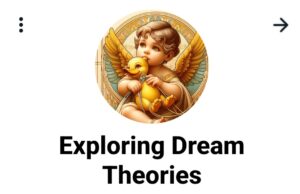On the animal symbol in dreams / Ruth Netzer
The central myth of human culture, and particularly of Western culture, is the victory over and taming of the beast, even killing or sacrificing it. The god, the ancient king, and the hero are depicted as those who can conquer the primal beast and dominate it, or as accompanied by a beast they control, symbolizing their power.
Human consciousness fundamentally requires the suppression, weakening, restriction, and even denunciation of the animalistic-instinctual elements because they symbolize the unconscious power threatening to take over. Consciousness is built by strengthening the control of consciousness over the instincts within the psyche. In Western cultures, the beast as a symbol of physical instincts is considered inferior. Many parts of the body are deemed impure; the organs of excretion, body secretions, and menstrual blood. The distinction in Judaism and other ancient cultures between an impure and pure animal is one way to differentiate between the threatening and the positive elements of the beast. Purification rituals related to the body help to accept the physical and neutralize its negative quality.
Animals symbolize in myths, legends, and dreams the unconscious instinctual-impulsive-physical-sensory aspects of ourselves that belong to the realm of the body. Freud called them ‘id’, and Jung called them ‘shadow’, with which we come into the world. The tendency is to regard the ‘id’ and ‘shadow’ as negative, although in the natural kingdom of the psyche, nothing is inherently good or bad.
Therefore, as compensation for this view, stories have emerged that restore value to the body’s beast: in healing tales, often the animal the person encounters is their guide. It shows them the way. One may need to learn to accept the beast with its repulsive parts to reveal its quality nature. Thus, in the story ‘The Frog Prince’, where the girl has to kiss the frog and then he is revealed to be a prince. And in the tale ‘Beauty and the Beast’, where what seems ugly and beastly is redeemed through love. This is the alchemical transformation of the beast’s inferior element into its noble aspect. In these instances, the beast symbolizes the person’s shadow aspect, which they learn to live with peacefully and discover its beneficial qualities.



